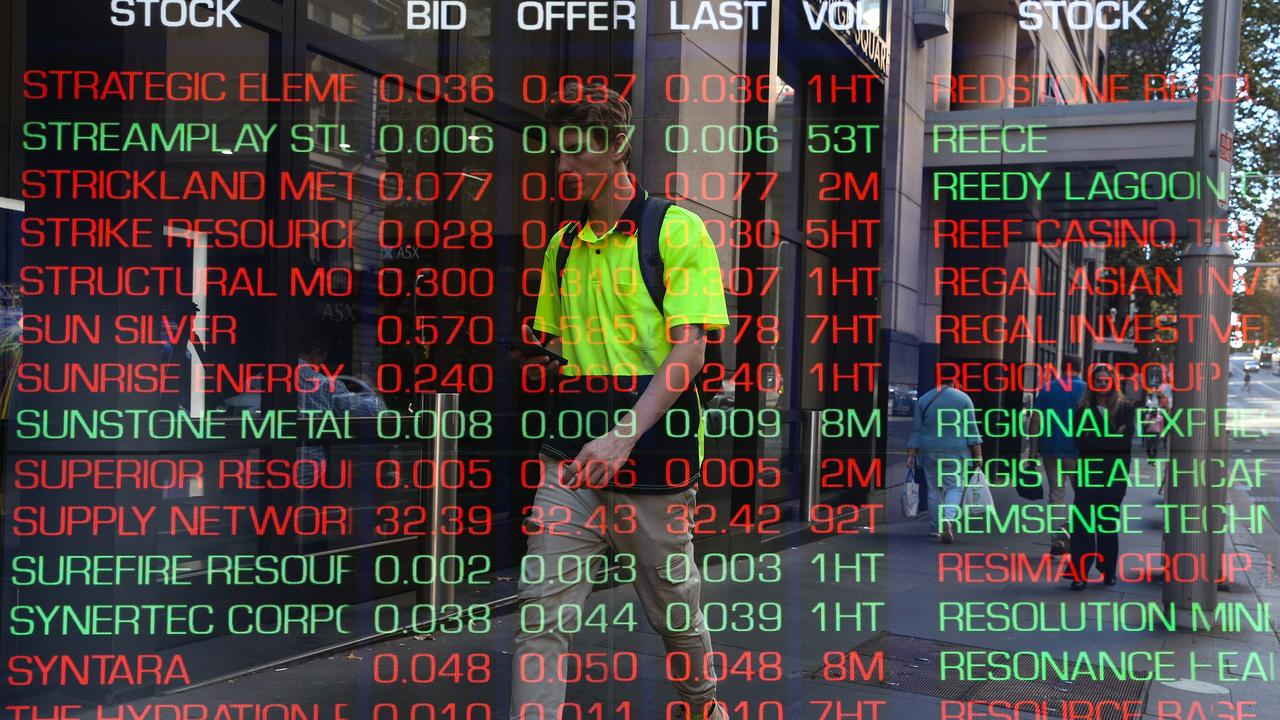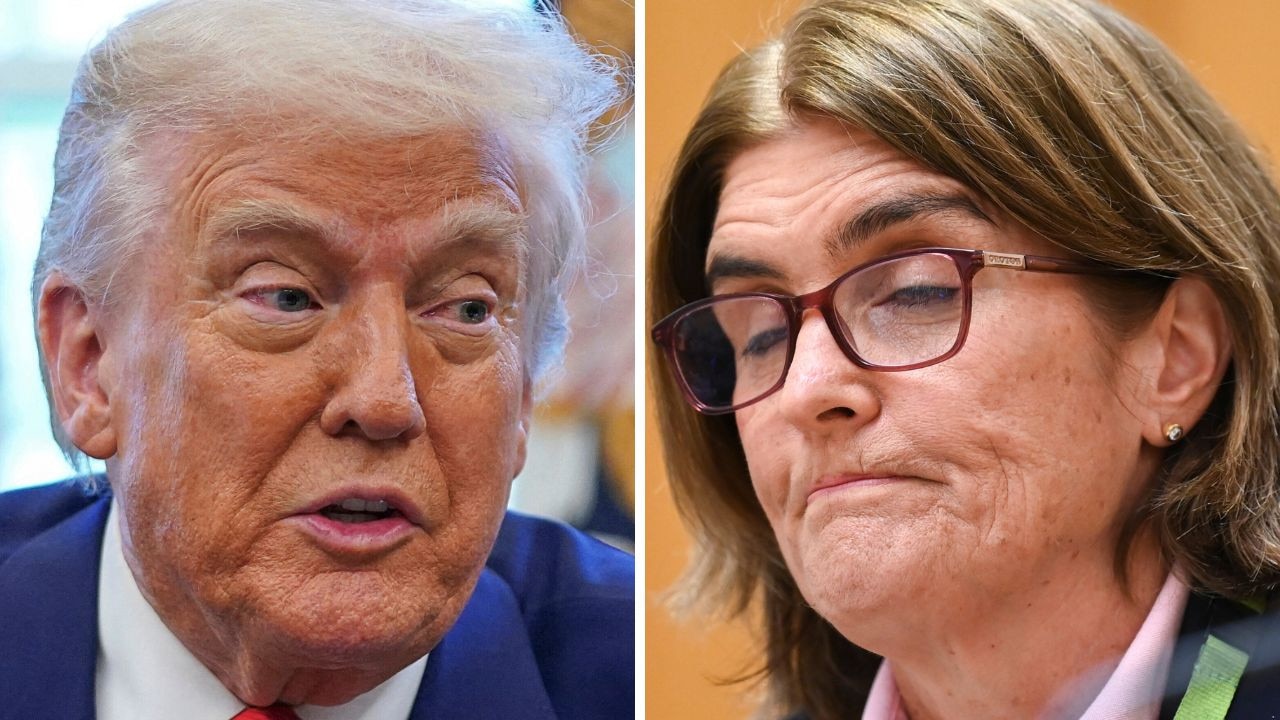Melbourne ‘tradie’ protests are not just about Covid vaccinations
Lockdown fatigue, a growing suspicion of police and an angry disconnect between construction workers and their union meant Melbourne was a powder keg in search of a spark.
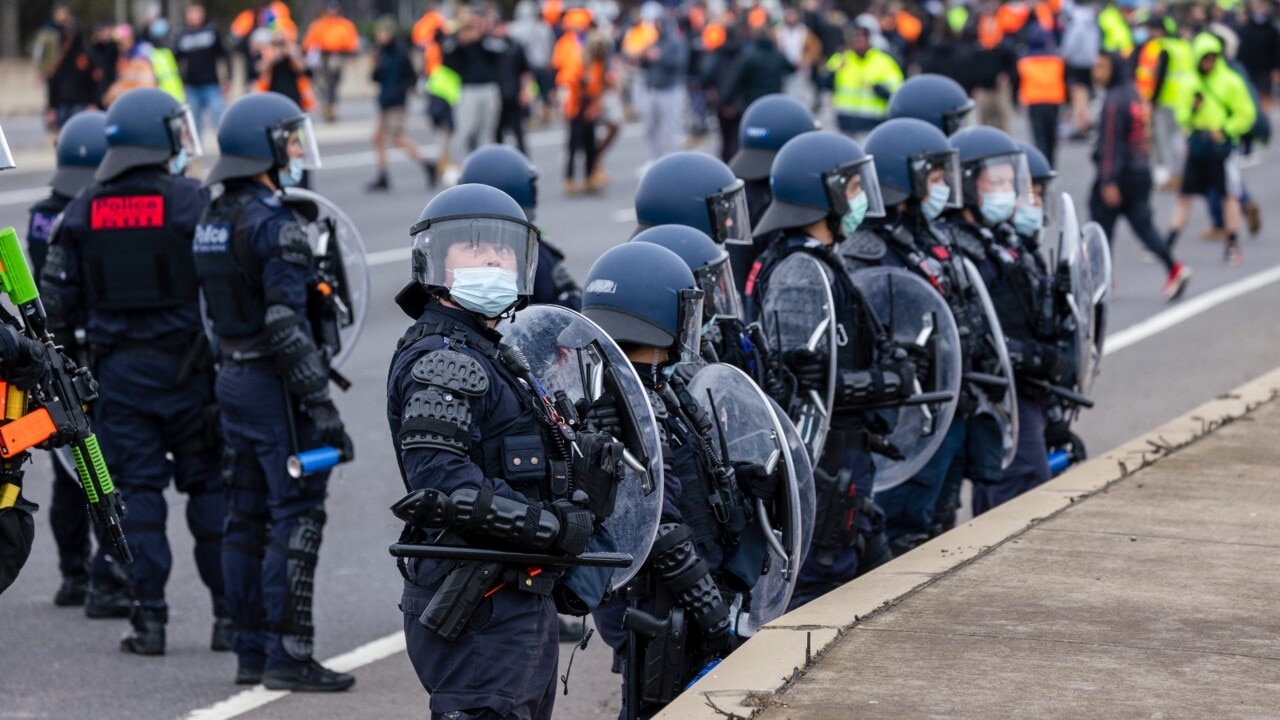
National
Don't miss out on the headlines from National. Followed categories will be added to My News.
Melbourne is a crazy place at the moment. After two winters locked inside, the normal rules of politics seemed to have been turned upside down.
For years Victorians have been used to watching angry mobs of building workers shutting down building sites.
We’ve never seen them trashing their own union’s offices.
The Liberals are the party of law and order. At the last state election they campaigned on tougher penalties for people who breach. But on Wednesday night state Liberal MP Bernie Finn, took to his Facebook page saying Victoria Police officers were the “modern incarnation of the Despot’s militia”.
Finn might be a crank but the growing suspicion of Victoria Police among the conservative movement has become more and more marked as the pandemic has raged on.
The Institute of Public Affairs is a free market think tank known as a breeding ground for Liberal MPs, including rising Victorians Tim Wilson and Senator James Paterson.
Last week its staff were posting videos in which they dissected videos of Victoria Police pepper-spraying protesters.
Strange days indeed.
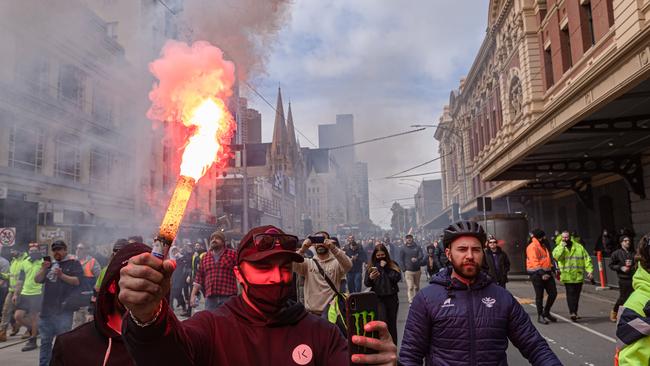
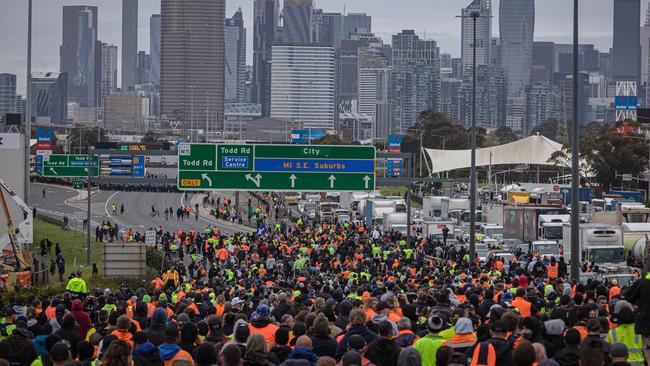
The signs that Melburnians are reaching the end of their tether with lockdowns can be seen from the way the current Delta outbreak is growing.
Melbourne might have tighter restrictions than Sydney but you wouldn’t know it from the case numbers.
Last Monday, at day 46, Victoria had clocked up 8000 coronavirus cases during the current outbreak.
At the same point NSW had racked up 1700 cases.
In other words, while they might not be rioting in the streets, clearly a large chunk of the population has decided to quietly start breaking the rules.
Or as one pollster summed it up this week: “People are jack of it but they’re not going to go out there and run the risk of copping a rubber bullet.”
In retrospect it seems obvious that if trouble came it was likely to start with the state’s militant construction union the CFMEU.
When the explosion came on Monday it set off by an unlikely trigger: the decision by the state’s chief health officer Brett Sutton, to close tea rooms on building sites.
And it clearly took the union’s leadership by surprise.
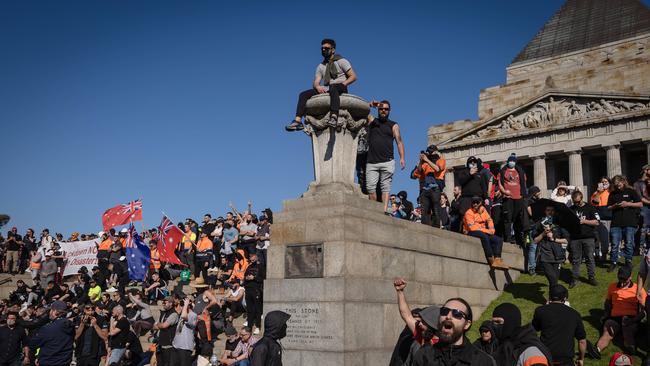
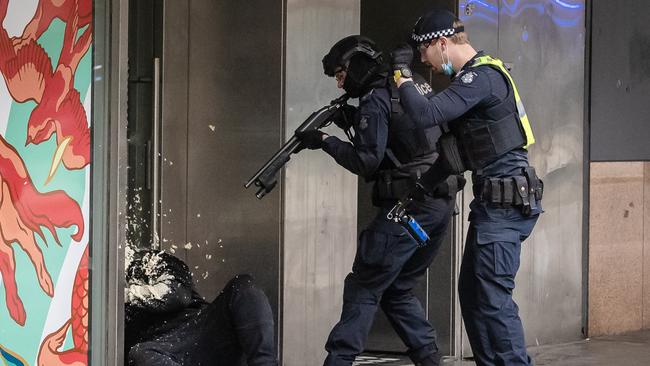
The building industry has been shielded by the Andrews Government from the economic effects of the lockdowns that have decimated other sectors of the economy. But earlier this month the growing evidence they are sites of transmission led Sutton to order their closure.
The move prompted workers to block traffic as they had their smokos outside.
To outsiders, the protests looked like the normal street theatre Victorians have come to expect from the CFMEU, especially after they were defended on radio by the union’s leader John Setka.
But in fact, insiders say, it was a sign of the growing gap between the union’s leadership and its rank and file.
“They were taken completely by surprise,” one worker said.
According to another insider, workers on big construction jobs can go months without seeing a union delegate, something that would once have been unthinkable.
“There’s been a growing disconnect between the (union) delegates and the members for the past couple of years,” the insider said.
To get around the tea room closure the union leadership, led by Setka, began negotiating with employers in talks brokered by the government.
To outsiders Setka’s authority seemed unquestioned.
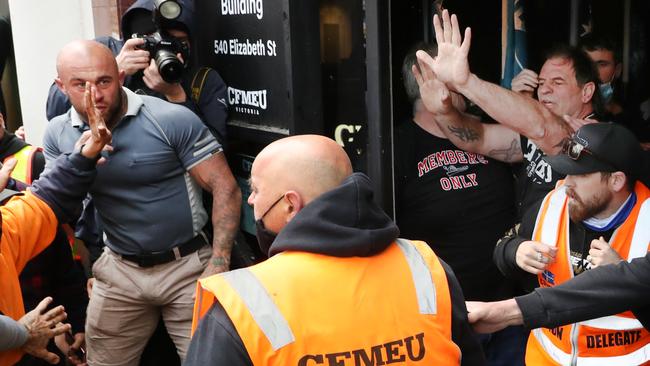
For years, he has reveled in the power that comes from being the boss of the biggest and richest branch of Australia’s most militant union.
Despite being charged with dozens of offences arising from industrial action and paying out millions of dollars in fines his position in the union seemed impregnable.
When in 2019 domestic violence allegations were levelled at him by his wife, Emma Walters, it looked as though his time was up.
But although he was forced out of the Labor Party, he cemented his control of the union, purging his critics.
Setka had every reason to belief the deal he had negotiated that would see labourers paid for eight hours, despite only working for six would be accepted by his members.
Instead it saw angry building workers from all over the city swarmed to the union’s offices.
The crowd might have chanted anti-vaxxer chants and they were clearly riled up about Sutton’s order that they must by jabbed.
But they were also angry about a more traditional CFMEU concern: overtime.
“The reality is most people work 10 hours,” one worker explained.
“So, yeah, they’re going to be getting a higher rate but they’re still going to be worse off because they don’t have those extra hours on penalty rates.”
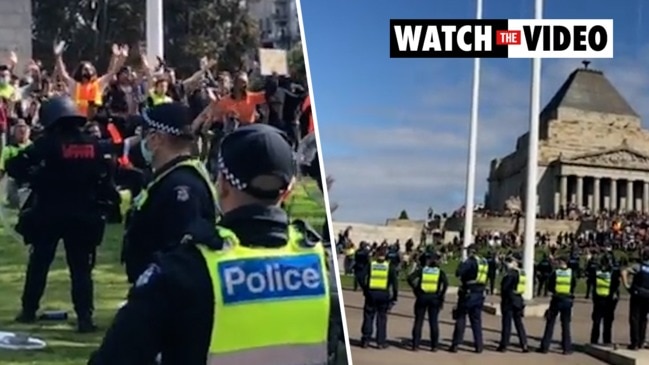
An official from a different union who watched event unfold last week said the whole thing could have been avoided.
“If they’d gone onto the sites and said ‘we’ve got to make sacrifices because this is a pandemic’ I reckon they would have accepted it. Or they could have called a meeting and sold it there. But they didn’t to that, they just dropped it on people,” he said.
As the crowd of workers outside the CFMEU offices grew on Monday, it was swelled by other, more sinister elements.
Lydia Khalil, who studies extremism at Lowy Institute, said the protest on Monday had begun as a spontaneous gathering of CFMEU members but “towards to the end of the protest it attracted other anti-lockdown protests” who had been summoned via messaging apps such as Telegram.
But she cautions against suggesting there is no intersection between the two. In some cases “the members of these groups are also tradies,” she said.
Federal Labor MP Bill Shorten was quick off the blocks the next morning to denounce the protesters as fake tradies “who had been down to the Reject Shop and got themselves a $2 hi-vis hoodie so they could pretend they were construction workers”.
The decision of the former Australian Workers Union leader to come to the aid of the embattled CMFEU leadership was surprising on the face of it.
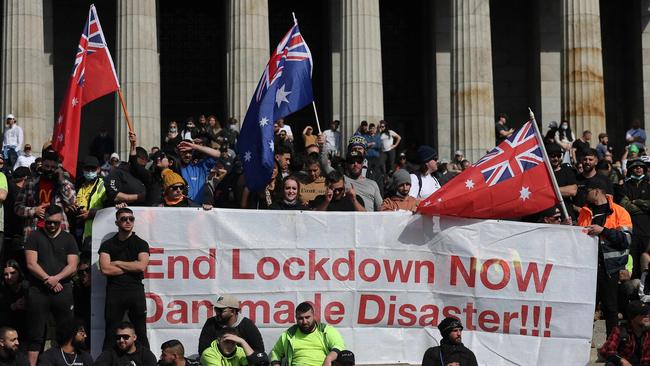
Setka is currently facing fresh allegations of domestic violence from Ms Walters.
It only made sense if you understand that Shorten’s wing of the Victorian Right is currently in political alliance with the CFMEU which has largely paid for a court case which could see the ALP federal intervention into Victoria overturned.
Shorten said the protest had been high-jacked by “man baby neo-Nazis” who had nothing to do with the union.
It’s a view that is rejected by other Labor MPs.
“There is no doubt there are extremist elements within that union — I don’t know much they’ve infiltrated it but it is clearly significant,” one said.
Another union official agreed: “You’ve got some people with fairly out-there views, some but no means all of them come from Croatian backgrounds where they’ve had parents and grandparents that have never repudiated the Ustace (the wartime Croatian fascist party).”
Dr Khalil however, warns against labelling all anti-lockdown and anti-vaxxers neo-Nazis.
“There are not a lot of neo-Nazis, there are some, but I think people are using the term to inaccurately describe anti-lockdown and anti-vax groups,” she said.
“There is some intersection in terms of beliefs and narratives around anti-government views, conspiratorial views, the view the government itself is undemocratic and illegitimate,” she said
“Some are truly fed up with lockdowns but don’t have a broader distrust of government but others do.
“What you see are conspiratorial narratives that cross over with Qanon conspiracies.”
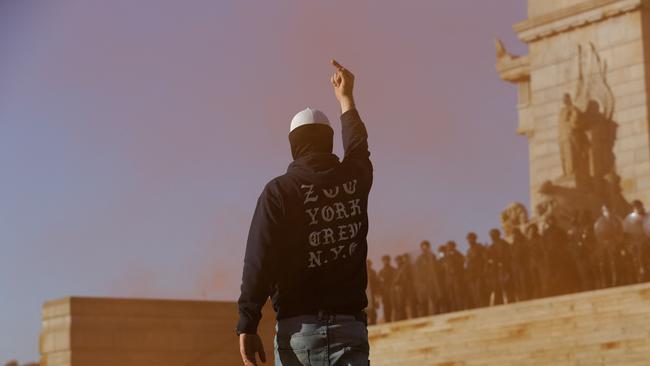
The government’s move to shut the construction industry down completely on Monday night was clearly designed to prevent a repeat of the scenes outside the CFMEU offices.
It didn’t work. Tuesday saw another crowd, estimated at between 3000 and 5000 — many of them drunk — occupy central Melbourne, before marching to the West Gate Bridge and back again.
Observers in the crowd said that while there was clearly an anti-vaxxer element, it was still largely made up of building workers.
It was also clearly multiracial with many Pacific Islander faces in the crowd as there had been on Monday.
The crowd also contained a number of people who are neither conspiracy theorists or anti-vaxxers — they’re just tired of lockdowns.
The decision to occupy the step of the Shrine of Remembrance on Wednesday afternoon could be seen as the turning point, with social media erupting with disgust at the blasphemy of intruding on that sacred space.
By Thursday evening it was looking as though the protests were running out of puff.
Authorities are praying it doesn’t get a second wind next week.
For Dr Khalil it is no surprise that trouble started in Melbourne.
“You can’t discount the situation we’re in. We’ve had the harshest and longest lockdown,” she said.
Originally published as Melbourne ‘tradie’ protests are not just about Covid vaccinations


